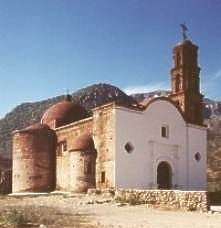The beauty of Mexico’s Copper Canyon and the simple life-style of its Tarahumara residents is the real “Treasure of the Sierra Madre,” but this remote region of rugged mountains and deep canyons may also hold more traditional treasure—gold and silver buried in undiscovered troves.

In February, 1767, King Charles III of Spain decreed that all Jesuits be expelled from the New World and that their properties be confiscated. His counselors had advised him that the Jesuits held a special allegiance to the pope and opposed the supremacy of the monarchy. In addition, there were suspicions that the Jesuits were involved in political intrigues in Madrid. Some of this came about because the Jesuits, known as the “Black Robes,” had acquired much wealth and power throughout the empire, causing enmity among clergy of other orders.
To prevent the Jesuits from hiding their wealth, it became imperative that the expulsion be carried out simultaneously and without warning throughout the empire. Messages under seal of the king were sent to all military commanders and were not to be opened until June 25. On that day the officers were ordered to arrest and deport the Jesuits and confiscate all the church’s property for the crown.
Despite the best efforts at secrecy, the Jesuits in Mexico became aware of the plan and began conveying their treasure out of the country by secret channels. Because of the short notice, they could not transport all of the gold and silver and were forced to bury large quantities of it.
In the bottom of Copper Canyon, four miles beyond the town of Batopilas, is Satevo, a small settlement with a beautiful old church, Iglesias San Miguel de Satevo. The church, with its three-tiered bell tower and its three domes, is all that remains of the mission of Santo Angel Custodio de Satevo, built by the Jesuits around 1760 and destroyed by a fire in the late 1800’s. All of the mission’s records were lost in the fire and the church has become fancifully known as the “Lost Cathedral of Satevo.”
In the 1800’s, vandals looking for wealth hidden by the Jesuits, ransacked the church and its crypts, but there is no evidence that they found anything. Some people believe that treasure is still hidden in the vicinity of the old church and, indeed, throughout the Sierra Madre mountains.
Many of our Copper Canyon trips visit Satevo and the old church of San Miguel de Satevo. On these journeys to the bottom of the canyon you probably won’t uncover the gold and silver allegedly buried by the Jesuits, but among the beauty, tranquility, and the always-present history of the region, you’re sure to discover your own “Treasure of the Sierra Madre.”
